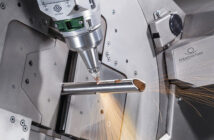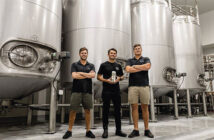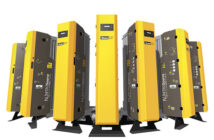The latest generation of food production plants enables operators to conserve resources by optimising processes, boosting flexibility and improving products. By integrating design criteria and cutting-edge automation components, operators can produce quality products that benefit manufacturers, consumers and the environment.
Hygiene will remain the overarching topic for factories and processing facilities in the future. The systematic use of hygienic design criteria to improve plant hygiene has a positive impact on a wide range of different factors.
Processing facilities that are easier to clean also create substantial cost savings in practice, because they can be cleaned more rapidly with the use of less water, energy, cleaning agents and disinfectants. This not only saves money but also improves the company’s environmental performance.
Now that the key hygienic design criteria for factories and processing plants have been formulated and implemented with increasing success, researchers have begun to examine the issue in more detail.
In the years ahead, close examination of the properties of material surfaces and their interaction with dirt and microorganisms will provide new insights that will be used to create new cleaning strategies.
These include strategies for combating harmful biofilms, which have been largely disregarded up until now, as well as systems for the biomonitoring of plant cleanliness and hygienic conditions.
Stainless steel is an outstanding material with regard to durability and hygiene. To date, it has always been the key material for ensuring that processing facilities are easy to clean. However, alternatives are now being increasingly used for exterior surfaces, largely because of the greatly increased prices of raw materials. These alternatives consist of materials and coatings that offer a range of advantages.
Bosch Rexroth, for example, is using special plastics for its successful CL03 valve terminal system. These plastics can withstand a wide variety of cleaning chemicals so that the terminal system achieves protection class IP69K, which means it can be used directly on the machinery without requiring a switching cabinet.
Innovative surface coatings are already being used in washdown drives, automation components and robots. Their low percentage of stainless steel and the possibility of using other materials underneath the surface coating makes these systems less expensive and lighter than those made of stainless steel. Thus it is possible to reduce the material costs of servo motors by around 30 percent if two-part coatings are used.
The protective coat meets the IP67 protection class and enables the wet cleaning of the machinery with cleaning agents and chemicals.
This new generation of robust, hygienic surfaces is represented by the tried and tested VLT series from Danfoss and by Stäubli’s He robot series. It allows exterior surfaces to achieve the same level of durability and cleanability as stainless steel without containing this material. Stainless steel remains the preferred material for processing plant interiors and is difficult to replace.
Nevertheless, the rising cost of this material will almost certainly lead to the development of alternatives in the medium term. Nanoscience will surely contribute to the development of suitable coatings for the targeted modification of surface properties and generating new ideas for hygienic plant design.
Modular systems for improving plants and efficiency
Plant manufacturers are continuously improving their products in order to approach maximum efficiency at all levels. Modular designs for flexible expansion, retooling and upgrades, as well as flexible application possibilities, are now almost mandatory features in this regard. One example of this is the optimised version of the Tetra Albrix module for dissolving sugar.
Thanks to its high operating efficiency and modular design, this system cuts costs, increases environmental compatibility and simplifies upgrading. A range of innovations makes these savings possible compared to predecessor models. The module is fitted with an advanced control system for the brix setpoint value that enables companies to continuously adjust the dosage and maintain the temperature at an optimal level for the respective amount of sugar, thus reducing energy consumption.
Energy consumption is also cut by a new cross-flow filter, which enables the manufacturer to determine the size of the sugar crystals and minimises the dissolution temperature.
Heating costs are 42 percent lower than those of the predecessor version, and the costs for cooling energy are even 55 percent lower. Including the demand for cooling energy, electricity consumption amounts to only 4 kWh per 1,000 litres of the product, while the amount of heating energy needed totals 14.5 kWh per 1,000 litres. Other advantages include time savings resulting from process acceleration and reduced raw material costs due to the use of less expensive sugar. Depending on requirements, the dissolver can be modularly expanded to include a pasteuriser and a decoloriser.
This example combines a number of trends, some of which the manufacturers of processing facilities have been addressing for a long time, but which will not become less important in the future. One of these trends is the increasingly modularised design of the facilities and the individual components, which makes it possible to customise the assembly and expansion of plants and components, as well as of complete modular systems.
The resulting cost savings in production and parts stocking benefit manufacturers and customers alike. Another trend involves splitting processing facilities into modules, components and parts, but at the same time holistically examining the effects of changes so that time, raw material and energy savings can contribute to substantial cost reductions.
However, one of the most important trends for the production flow involves the sensor systems. Increasing process integration and new developments in online and inline analyses opens up new possibilities for measuring and controlling technology as well as for the automation of processes.




























































































